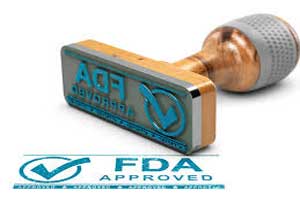- Home
- Editorial
- News
- Practice Guidelines
- Anesthesiology Guidelines
- Cancer Guidelines
- Cardiac Sciences Guidelines
- Critical Care Guidelines
- Dentistry Guidelines
- Dermatology Guidelines
- Diabetes and Endo Guidelines
- Diagnostics Guidelines
- ENT Guidelines
- Featured Practice Guidelines
- Gastroenterology Guidelines
- Geriatrics Guidelines
- Medicine Guidelines
- Nephrology Guidelines
- Neurosciences Guidelines
- Obs and Gynae Guidelines
- Ophthalmology Guidelines
- Orthopaedics Guidelines
- Paediatrics Guidelines
- Psychiatry Guidelines
- Pulmonology Guidelines
- Radiology Guidelines
- Surgery Guidelines
- Urology Guidelines
FDA Approves Novel Non-Surgical Device for Weight Reduction in Obese Patients

The Food and Drug Administration (FDA) has approved the TransPyloric Shuttle (TPS) Device (BAROnova Inc.) for weight reduction in adult patients with obesity with a body mass index (BMI) of 30 to 40kg/m2 or a BMI of 30.0 to 34.9kg/m2 with 1 or more obesity-related comorbid conditions.
The device, which is approved for 12 months of treatment, is approximately 5.6cm in diameter and is delivered and retrieved endoscopically. The primary mechanism of action of the TPS device is to delay gastric emptying; it is intended for use in conjunction with a diet and behavior modification program.
The approval was based on data from the ENDObesity II trial, a double-blind, sham-controlled study conducted in 302 patients. The co-primary endpoints of the study were mean percent total body weight loss between the treatment and control groups at 12 months and the proportion of patients with ≥5% total body weight loss in the treatment group at 12 months.
Results showed that at the 12-month follow-up, the mean percent total body weight loss was 9.5% for the TPS group and 2.8% for the control (P <.0001). In addition, ~67% of patients treated with the TPS device lost ≥5% of total body weight; this exceeded the performance goal of 50% (P <.0001).
Moreover, TPS treatment was associated with greater improvements in cardiometabolic risk markers, as well as improvements in weight-related quality of life. “Further validation of potential comorbidity benefits, like cardiometabolic improvement observed in the pivotal study, during the postmarket phase may translate to important advantages in achieving healthcare coverage for the TPS device in the future,” said Lian Cunningham, MD, PhD, Senior Vice President of Clinical Affairs and Regulatory Affairs of BAROnova Inc.
With regard to safety, gastrointestinal symptoms (stomach pain, nausea, vomiting, dyspepsia) were the most common adverse events reported in patients treated with the TPS device.
“Endoscopically delivered intragastric devices can help close the obesity treatment gap and offer alternative options for qualified patients who are not eligible, or unwilling, to undergo metabolic and bariatric surgery,” said Dr Wayne English, Associate Professor of Surgery, Clinical Trial Research Director at Vanderbilt University Weight Loss Center, and a principal investigator for the ENDObesity II study. “The TPS device design addresses some of the limitations with the first-generation intragastric devices and offers longer treatment duration which is clinically attractive.”

Disclaimer: This site is primarily intended for healthcare professionals. Any content/information on this website does not replace the advice of medical and/or health professionals and should not be construed as medical/diagnostic advice/endorsement or prescription. Use of this site is subject to our terms of use, privacy policy, advertisement policy. © 2020 Minerva Medical Treatment Pvt Ltd